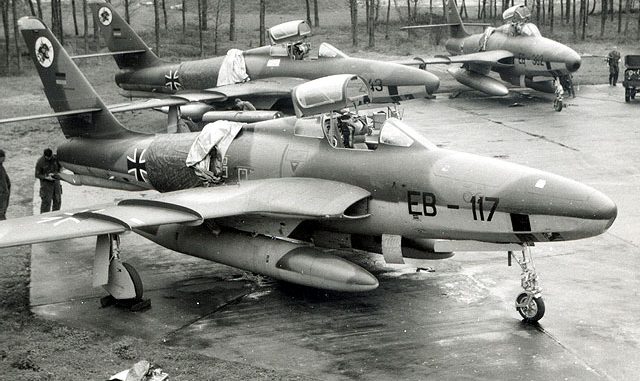
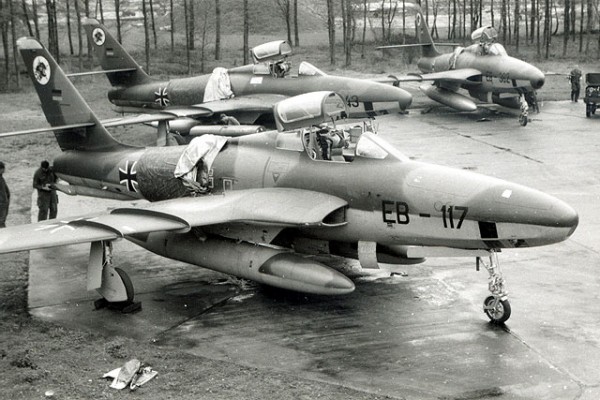
Few days ago we have published an introductory article about Howard “Scrappy” Johnson (here). Scrappy an article about the Luftwaffe in 1961 when he was an advisor to the West German Air Force, Scrappy wrote this article with the hope that it would get published on an American magazine.But that didn’t happen. The reader’s Digest, New York New York, Real Letter,Brand & Brand Letter one by one they turn him down. So here it is as it was written in 1961.
LUFTWAFFE – 1961
Lt Col Howard Johnson
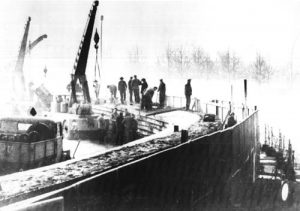
With the crisis facing us in Berlin, we now find ourselves (USADF) allied with the same Luftwaffe that was both feared and respected by Allied Forces in two world wars. Editor’s Note -The Berlin Crisis of 1961 (4 June – 9 November 1961) was the last major politico-military European incident of the Cold War about the occupational status of the German capital city, Berlin, and of post–World War II Germany. The U.S.S.R. provoked the Berlin Crisis with an ultimatum demanding the withdrawal of Western armed forces from West Berlin—culminating with the city’s de facto partition with the East German erection of the Berlin Wall.
Are they capable today of fighting, if necessary, with the same tenacity and fierceness? This story is told by an American pilot who flies and works with one of West Germany’s new Fighter Wings.
Today the Fighter Pilot is in the stage of existence comparable to that of the Western Gun Fighter in the late 19th century; and, like the Western Gun Fighter, he will go down in history as one of its most colorful heroes. Today most Fighter Pilots lives are one of frustrations for, although in this period interim to the Missile Age they are still very necessary at the moment, their future is doubtful. In the United States Air Force today most Fighter Pilots are trying to hang on to the job they love so dearly. In Stateside USAF units, pilots sweat out monthly quotas to various schools which earmark them from ground duties. This same applies to pilots being transferred back to the States from overseas.
This story portrays a group of people who have not as yet been affected by this passing of an era.
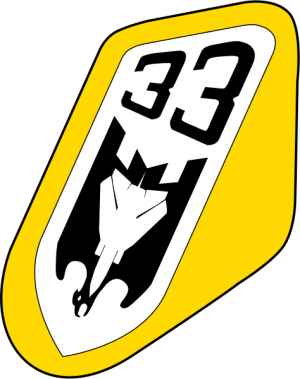
Jabo 33 (33rd Fighter Bomber Wing) is located at Buechel, Germany, which lies some ten kilometres from the picturesque Mosel River. The Mosel is famous in Europe for the white grapes that grow on the steep slopes of its valley, or possibly more famous for the white wine that is made from the grapes. One of the most beautiful castles in Europe is in Cochem, the nearest town in Buechel on the Mosel.
When I received my orders to transfer to Buechel Fliegerhorst (Air Base), it took several days of checking library atlases and querying friends, who had previously been stationed in Germany, to finds its location. The village of Buechel was so small it was not on the maps available at my base in the States. My job was to be Tactical Air Advisor to Jabo 33, assigned to the Military Assistance Advisory Group located at Bad Godesberg, Germany, a USAF contingent designed to assist the German armed forces build up their military potential and thus strengthen NATO.
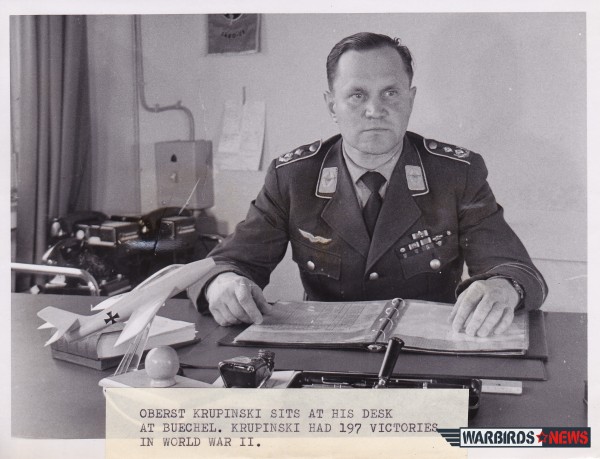
Jabo 33 is ably commanded by fiery Oberst Walter Krupinski (USAF equivalent Colonel). He was one of the leading German Fighter Pilots of the Luftwaffe in World War II and is one of the world’s all time top fighter aces with 197 victories. Colonel Krupinski began his flying career in 1939. He has flown all the well known World War II German fighter planes, including the ME-109, FW-190 and the ME-262, the world’s first operational jet. Krupinski has the look of a Fighter Pilot. He has a fairly short, five feet eight inches, stocky stature. He has very piercing eyes and his manner is one which emanates confidence and aggressiveness. Major Hans Klaffenbach, also of the WIng, flew some missions with Krupinski in the war.
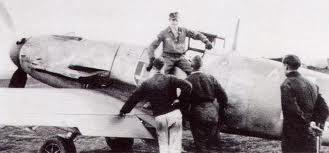
Klaffenbach describes Colonel Krupinski as a real “Tiger” in the air. He said that on the first mission he flew with him Krupinski had already shot down two aircraft before he could get joined up.
Krupinski relates one experience where he had to bail out at a high altitude of 27,000 feet. Not wanting to open his parachute in the cold thin air, he delayed pulling his ripcord and made a free fall for many thousand feet.
He said that, after he was able to control the excessive tumbling which usually occurs, he became so fascinated at watching the earth laid out below he almost forgot to pull the ripcord. He remembered to only at the last moment and when his parachute eventually did open he hung in it only seconds before touching the ground. He was later shocked by this phenomenon being so engrossed with the earth before him he almost forgot the most important item of the bail out procedure, that of pulling the ripcord. This fascination is somewhat common when free falling for I have heard others say that too had been affected by it.
One evening we had American visitors at Buechel from Ramstein Air Force Base. Two of them, Lieutenant Colonel Mason and Major Diefendorf, had flown P-38’s in Europe during the war. It was very interesting listening to the discussion between Krupinski, Klaffenbach and these two. Most of the evening was spent trying to determine whether or not they had flown in the same air battles on opposite sides during the war. The only conclusion that could be reached was they had flown on some occasions on the same day.
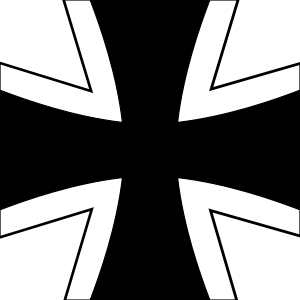
Krupinski was out of the service from the end of the war until 1953, when he came back in to assist in the formation of the new German Air Force. He is an extremely colorful person, beyond doubt, one of the most dedicated military men I’ve known. In the military there are officers who by nature make excellent staff officers and conversely there are those whose abilities make them better commanders. Krupinski definitely falls in the latter group. Though like other commanders I have known with like personalities, due to his aggressive nature, impatience in wanting to get on with the job, he sometimes gets into riffs with the aforementioned staff officers from headquarters. When overdue supplies are not received and when directives or regulations are not clear or are impractical to follow, he becomes annoyed and doesn’t hesitate to say so. However, he seems to take these riffs in his stride with no evident outer emotion other than enjoyment. He is known as a stern and demanding commander but one who will assume all the responsibility of his position and go all the way for his men when he thinks they are right — and they’d better be right.
Since its activation, Colonel Krupinski has made great strides in learning modern methods and putting them into effect in his Wing. He and most of his supervisors did not have any association with flying from 1945 to 1956, so they had to catch up with eleven years of progress in a very short period. This is a particularly commendable feat considering the amazing advances made in aviation during this period.
As yet, the German Air Force is not bound by the many regulations and directives that are found in the United States Air Force; most of the decisions are left up to the commanders. This is a situation in which commanders like Krupinski prefer to operate. Strict controls from higher echelons are generally designed to guide and sometimes prod weak or inexperienced commanders, but, at the same time, these controls restrict the stronger, more aggressive ones.
Most of the key officers of the Wing also have World War II experience. Major Klaffenbach, the Technical Group Commander, is a handsome blonde with a ready smile, a hearty laugh and a quick wit. Talking with Klaffenbach on several occasions at the Officers Club, we eventually got to telling war stories. This invariably happens when Fighter Pilots get together and especially if there is a bottle of beer involved. During the conversation I found that Klaffenbach isn’t particularly proud of his wartime victory record (24). In respect to Krupinski and some of the other German Aces, it may seem meager but in most circles it would be a very respected score. Klaffenbach tells one story of his experience in postwar Germany which I found very amusing. As did most people in post World War II Germany, he had a difficult time. After kicking around from one job to another, he finally had an opportunity to get back near the flying business. He was able to get a job as a tower operator at an air base. The only problem with this seemingly desirable situation was that he was supposed to speak English which, at that time, he did not. The amazing part is that he bluffed his way through and learned how to speak the language before his superiors found out that he could not. Editor’s note- HERE is a list of German Aces in WWII.
Another interesting officer in Jabo 33 is Major Richard Schmitz, a staff officer in charge of communications and electronics. Schmitz is a tall, distinguished looking, friendly officer who flew JU-87 Stuka dive bombers in World War II. He has many interesting stories to tell, the most impressive of which relates to when he was shot down on a mission deep in Russia.
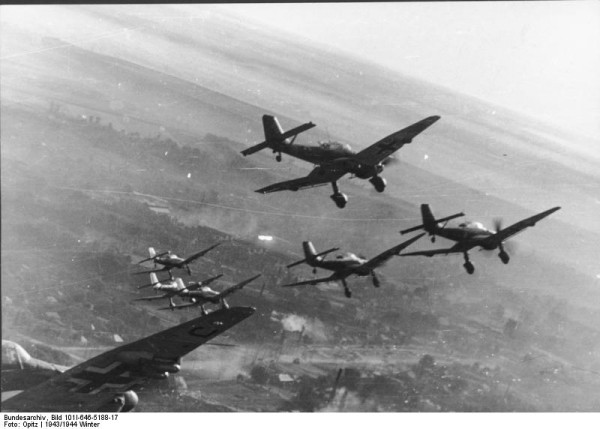
He had to land his Stuka in the first available location and was not able to find one which was conducive to a good landing. Since it had a fixed (non-retractable) landing gear, it flipped on its back on contact with the ground. During the crash his gunner in the rear seat was killed, but, except for being knocked out, Schmitz came through unscathed. The dive bomber had come to a stop in an inverted position with the canopy jammed closed, and when he recovered consciousness he found he was stuck inside the cockpit. Because of the crash, fuel was flowing all over the aircraft. He became extremely aware of the danger of fire, but as minutes ticked away and the aircraft luckily did not burst into flames, his fears began to diminish in this respect. His relief was short- lived, however, as gradually water began to seep into the cockpit from the very deep and melting snow outside. In the meantime he had managed to release his safety belt and sit upright in the canopy, although in a very cramped position. He spent two days sitting in this uncomfortable position in the freezing temperatures. After the second day he was near exhaustion from struggling to free himself. Knowing that he had to escape or perish in his small cage, either from freezing or starvation, he was able to break a small hole in the plastic canopy. Gradually with great effort he was able to enlarge the hole and escape.
THE SECOND PART OF THIS ARTICLE WILL BE PUBLISHED TUESDAY OCTOBER 1, 2013.
Click on the book cover to buy it on Amazon.

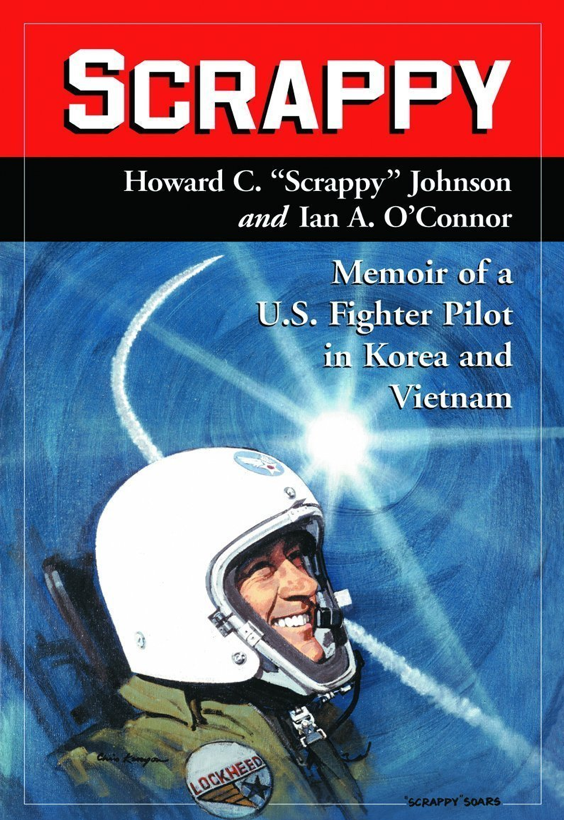

Dear Sirs,
one of those RF-84F serves as a Gate-Guardian at the former Military Base
at Leck ,Germany.
I served as a Flight -Ops- Specialist in the AG 52 ( Aufklärungsgeschwader 52) from 1974- 1976 when we had RF-4 E.
The base was closed shortly after the reunification of Germany in the early
1990s.
Best Regards
Heinz